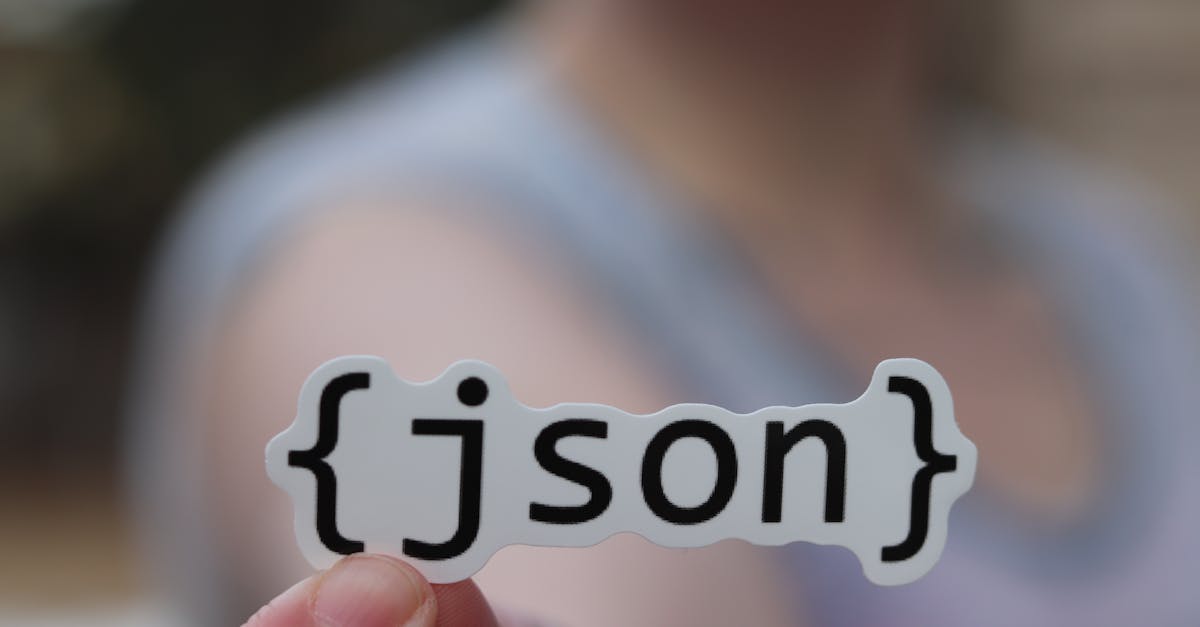Generated by Contentify AI
- Introduction
- Why JSON is a popular choice for client-server communication
- Understanding the basics of JSON
- Benefits of using JSON for client-server communication
- How to encode and decode JSON data
- Best practices for using JSON in client-server communication
- Conclusion

Introduction
JSON (JavaScript Object Notation) is a widely used data-interchange format that allows for client-server communication. It is a lightweight format that is easily parsed and is more efficient than the traditional XML format. JSON is quickly becoming the preferred data format for client-server communication among many web developers today due to its simplicity and flexibility.
When it comes to client-server communication, JSON provides a number of advantages. First, JSON is an easy-to-use format that is quickly becoming the preferred choice among many web developers. JSON is also a lightweight data format, meaning it can easily be parsed and modified. This makes it ideal for situations where data must be quickly transferred between the server and client. Additionally, JSON is capable of sending data in both directions, making it ideal for both client-to-server and server-to-client communication.
Another advantage of using JSON for client-server communication is its ability to handle complex data structures. JSON can handle nested data structures, allowing developers to easily store and retrieve complex data with minimal effort. This makes it ideal for situations where data must be quickly sent and retrieved from the server. Additionally, JSON supports the use of custom objects, allowing developers to easily create their own data types.
Finally, JSON is becoming increasingly popular due to its compatibility with a variety of programming languages. JSON is supported by a number of languages, including JavaScript, Python, and Ruby. This makes it easy for developers to quickly and easily integrate JSON into their existing code base.
In conclusion, JSON is quickly becoming the preferred data format for client-server communication due to its flexibility, lightweight nature, and compatibility with a variety of programming languages. Its ability to handle complex data structures, as well as its easy-to-use syntax make it perfect for use in a variety of situations. With its growing popularity, JSON is set to become the go-to standard for client-server communication in the near future.
Why JSON is a popular choice for client-server communication
JSON (JavaScript Object Notation) has become a popular choice for client-server communication, due to its lightweight structure and straightforward syntax. JSON is an open standard format, which means that it can be easily read and written by any programming language, making it an ideal data-interchange language.
JSON’s ability to represent data in a hierarchical and structured way makes it a great choice for client-server communication. It enables the sharing of complex data objects between server and client, including objects with multiple properties and values. This allows for a wide range of data to be shared between client and server quickly and easily, making JSON a great tool for APIs.
JSON also offers a number of advantages over other data interchange formats. It is more compact than other formats like XML, making it faster and more efficient to transfer. It also is easier to parse than other formats, making it easier for developers to create applications that can interpret and manipulate JSON data.
Finally, JSON is a widely supported format. It is used in web services, APIs, databases, and many other types of applications. This makes it a great choice for client-server communication, as there is a high chance that the client and server will both be able to interpret the data.
Overall, JSON is an ideal choice for client-server communication. Its lightweight structure and straightforward syntax make it an efficient way to transfer complex objects between client and server. Its wide support also makes it a great choice for developers, as it is likely that the client and server will both be able to use the same format. For these reasons, JSON should be considered when choosing a data-interchange format for client-server communication.
Understanding the basics of JSON
JSON (JavaScript Object Notation) is a lightweight data interchange format used to communicate between a client (e.g. web or mobile application) and a server. Unlike XML, which requires the server to interpret the data before it is used, JSON allows the client to quickly and easily parse the data for immediate use.
JSON is composed of two parts: objects and arrays. Objects contain name-value pairs and are represented by curly braces. Arrays contain a list of values and are represented by square brackets.
For example, a simple JSON object might look like this:
{
“name”: “John”,
“age”: 22,
“hobbies”: [“hiking”, “biking”, “running”]
}
In this example, “name” is an object and “hobbies” is an array.
When using JSON for client-server communication, the server typically sends the client a payload of data in JSON format. The client then parses the payload to extract the data and use it for whatever purpose is needed.
To make the communication between the client and server more efficient, some data formats can be used to serialize the data payload into a compact binary format. This serialized data is then sent to the client, which deserializes it to extract the data for use.
Using JSON for client-server communication is a great way to quickly and easily exchange data between two different systems. By utilizing a compact and easy-to-parse format, developers can create applications that communicate efficiently and reliably.
Benefits of using JSON for client-server communication
JSON, or JavaScript Object Notation, is an increasingly popular method for client-server communication. It is a lightweight, language-independent, human-readable data exchange format that is gaining traction in the modern day web development scene.
One key advantage of using JSON to facilitate client-server communication is its flexibility. Unlike other data formats such as XML, JSON is easy to read and write, making it easier for developers to quickly grasp the data being sent between the client and the server. Additionally, JSON can be used to send and receive data from a variety of sources and systems, allowing for streamlined communication between the two.
Another benefit of using JSON for client-server communication is its portability. JSON is compatible with a range of programming languages such as JavaScript, Python, and Java, making it easy to transfer data between different systems. Furthermore, since JSON is a text format, it can be easily modified or extended, allowing for the creation of custom data formats that can be used to communicate with the server.
Finally, JSON is a secure communication format. Since it is an open standard, there is no risk of data being intercepted or compromised. Additionally, tools such as JWT (JSON Web Tokens) can be used to further secure data sent and received over the network.
In conclusion, the use of JSON for client-server communication provides several benefits for developers. By taking advantage of its flexibility, portability, and security, developers can create powerful and efficient applications that can quickly and securely exchange data between clients and servers.
How to encode and decode JSON data
JSON (JavaScript Object Notation) is a lightweight, text-based data interchange format used for client-server communication. It is mainly used for exchanging data between a server and web applications. The JSON format is simple to read, write, and parse, which makes it a popular choice for client-server communication.
When it comes to using JSON for client-server communication, the process of encoding and decoding data is essential. Encoding JSON data is the process of converting an object into a string format, while decoding JSON data is the process of converting a string into an object.
The encoding process is usually carried out by the client-side application, and the resulting string is then sent to the server-side application. On the other hand, the decoding process is usually carried out by the server-side application, and the resulting object is then sent to the client-side application.
To encode JSON data, the client-side application should use the JSON.stringify() method. This method takes an object as its argument and returns a string representation of the object. For example, the following code will convert an object into a JSON string:
var jsonString = JSON.stringify({name: ‘John’, language: ‘JavaScript’}); // returns ‘{“name”:”John”,”language”:”JavaScript”}’
To decode JSON data, the server-side application should use the JSON.parse() method. This method takes a string as its argument and returns an object representation of the string. For example, the following code will convert a JSON string into an object:
var jsonObject = JSON.parse(‘{“name”:”John”,”language”:”JavaScript”}’); // returns {name: ‘John’, language: ‘JavaScript’}
By using the JSON.stringify() and JSON.parse() methods, you can easily encode and decode any JSON data for client-server communication. This will help you ensure that the data sent between the client-side and server-side applications is properly formatted and secure.
Best practices for using JSON in client-server communication
JSON (JavaScript Object Notation) has become the industry standard for client-server communication. This is due to its robustness and simplified syntax. It is human-readable, easy to understand, and can be easily parsed and manipulated by both the client and the server.
In the past, client-server communication was mainly achieved using XML, but JSON is much faster and requires less data to be transmitted. It also allows for more complex data structures to be represented, such as arrays, objects, and data types. This makes it incredibly versatile for a variety of use cases.
When using JSON for client-server communication, there are a few best practices to keep in mind. The first is to ensure that data is validated both on the client and the server. This will ensure that data is in the correct format and that malicious data is not sent from the client. It’s also important to ensure that data is properly sanitized to prevent malicious code from being sent from the server.
Another best practice is to use JSON as a means of transferring data, rather than HTML or other forms of markup. This will ensure that data is being sent in the most efficient way possible. Additionally, it’s important to make sure that the data is being parsed correctly and to take advantage of JSON Schema to validate the data before sending it.
Finally, it’s important to keep the payloads of the data small and efficient. Large amounts of data can slow down the connection and cause performance issues, so it’s important to keep the data as small as possible.
By following these best practices, developers can ensure that their client-server communication is safe, secure, and efficient. JSON is a powerful tool for creating distributed applications, and by following these best practices, developers can ensure that their applications are running smoothly.
Conclusion
JSON is a powerful tool for client-server communication, as it is lightweight, easy to understand, and supports a wide range of data types. By using JSON, developers can create efficient, secure, and reliable applications for a range of platforms. It is ideal for mobile applications, web applications, and IoT systems where data needs to be exchanged quickly and securely. The flexibility of JSON allows developers to keep up with current trends and technologies, providing the best possible user experience on the latest devices.
Using JSON for client-server communication provides a number of advantages, such as enabling developers to build robust, interactive applications quickly, easily, and safely. Additionally, JSON is a highly secure data format, which can be used to protect sensitive data from malicious attackers. Finally, JSON is a versatile data format, which can be used for a range of different applications, including gaming, mobile, web, and IoT.
In conclusion, JSON is an excellent choice for client-server communication. It is lightweight, easy to understand, and provides a versatile, secure, and reliable data format. Developers can use JSON to build reliable applications for a range of platforms quickly and easily, providing users with an enjoyable experience. With its wide range of features, JSON is the perfect choice for modern developers.



